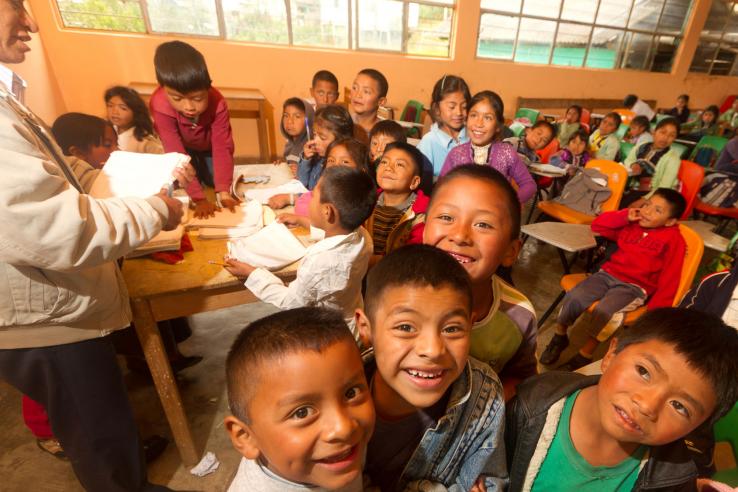
Cost-effectiveness for informed decision-making

When a funder or policymaker wants to achieve a certain goal—for instance, increasing citizen security—it is not always obvious which strategy will have the largest impact on the intended beneficiaries.
For good policies and programs to be implemented, funders and policymakers need to know the impacts that their different options have on the outcomes they are targeting. (Throughout this blog, we will refer to policymakers, taking this term to include funders too.)
Rigorous impact evaluations provide a valuable way to generate insights into the effectiveness of various potential strategies. In the last fifteen years, J-PAL’s network has contributed to a growing body of impact evaluations across a variety of fields including agriculture, education, governance, and health.
In our work we are increasingly seeing that the problem facing policymakers is usually not that there are no good approaches to solve a problem, nor that there are only bad solutions, but that it can be difficult to find ways to choose among multiple effective interventions.
It is not only about the effectiveness, but also the costs of the many approaches policymakers might pursue to achieve a certain goal. One way to make it easier for policymakers to compare a wide variety of programs is to present evidence in the form of comparative cost-effectiveness analysis.
In the simplest terms, cost-effectiveness analysis calculates the ratio of the amount of “effect” a program achieves for a given amount of cost.
J-PAL conducts comparative cost-effectiveness analysis to provide tools for policymakers to compare the relative efficiency of programs targeting the same outcome. To date, our cost-effectiveness analysis has focused on the education sector, but outcomes from many other sectors, including peacebuilding work, could also benefit from this type of analysis.
J-PAL’s cost-effectiveness analyses on education-focused programs that aim to improve student participation and test scores have been widely disseminated to help policymakers consider effective strategies to improve education while accounting for the implicit cost tradeoffs required for any decision about how to spend scarce resources. And, when communicated effectively, cost effectiveness analysis can have wide-reaching influence on the strategies used to address social challenges.
For instance, after a randomized evaluation found that providing students in Kenya with deworming pills was an incredibly cost-effective way to increase student attendance by ensuring they were healthy enough to attend, an organization called Deworm the World was launched to coordinate technical assistance and advocacy efforts for sustainable, large-scale school-based deworming programs. In the 2015-16 school year, over 190 million children around the world received deworming treatment.
While cost-effectiveness analysis is not the only factor on which policymakers make decisions, it does provide a useful starting point for researchers and policymakers to collaborate in assessing the efficacy of the different programs and their relevance to the particular situation. Detailed cost-effectiveness results, combined with an understanding of the problem being addressed and of other contextual factors such as current input prices and local institutions, can provide important insights into which programs are likely to provide the greatest value for money, and can help identify the key factors to which these outcomes are most sensitive.
J-PAL will continue to produce cost-effectiveness analyses to help policymakers in a variety of fields, including energy and the environment and health. The first step in conducting comparative cost-effectiveness analysis is to identify a single outcome that has been rigorously evaluated across the programs being included. While J-PAL affiliates have conducted more than 800 impact evaluations across a wide range of topics, experimental evidence on what works in the areas of crime, peacebuilding, and violence is limited.
Together with our partners at Innovations for Poverty Action, J-PAL is working to reduce this evidence gap. J-PAL’s Crime and Violence Initiative and IPA’s Peace and Recovery Program will support experimental research in several broad areas: reducing crime and violence, promoting peace, reducing “fragility,” and preventing and coping with crises. This research has the potential to generate new evidence on both the costs and the effectiveness of many possible strategies to promote peace. Cost-effectiveness analyses can build on the results of these evaluations to help policymakers identify the best strategies to increase peace and overall well-being.
Read J-PAL’s methodology paper outlining their approach to comparative cost-effectiveness analysis.
A version of this post originally appeared on Milt Lauenstein's blog.
